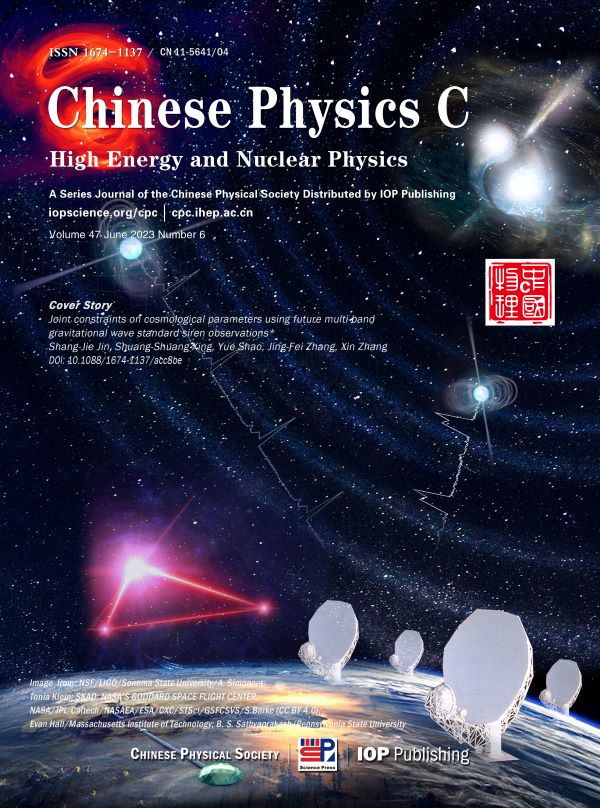Cover story |Jointconstraints on cosmological parameters using future multi-band gravitationalwave standard siren observations
Author:Shang-Jie Jin, Shuang-Shuang Xing, Yue Shao, Jing-Fei Zhang , Xin Zhang
Abstract:Gravitational waves (GWs) from compactbinary coalescences can be used as standard sirens to explore the cosmicexpansion history. In the next decades, it is anticipated that we could obtainthe multi-band GW standard siren data (from nanohertz to a few hundred hertz), whichare expected to play an important role in cosmological parameter estimation. Inthis work, we provide, for the first time to the best of our knowledge, jointconstraints on cosmological parameters using the future multi-band GW standardsiren observations. We simulate the multi-band GW standard sirens based on theSKA-era pulsar timing array (PTA), Taiji observatory, and Cosmic Explorer (CE)to perform cosmological analysis. In the Λ CDM model, we find that the jointPTA+Taiji+CE data could provide a tight constraint on the Hubble constant witha 0.5% precision. Moreover,PTA+Taiji+CE could break the cosmological parameter degeneracies generated byCMB, especially in the dynamical dark energy models. When combining the PTA+Taiji+CE data with the CMB data, the constraint precisions of Ωm and H0 are 1.0% and 0.3%, respectively, meeting the standardof precision cosmology. The joint CMB+PTA+Taiji+CE data give σ(w)=0.028 in the wCDM model and σ(w0)=0.11 and σ(wa)=0.32 in the w0waCDM model, which are comparable withor close to the latest constraint results by CMB+BAO+SN. In conclusion, thefuture multi-band GW observations are expected to be used for exploring thenature of dark energy and measuring the Hubble constant.
Keywords: gravitationalwave, standard siren, multi-band observations, cosmologicalparameters, dark energy














